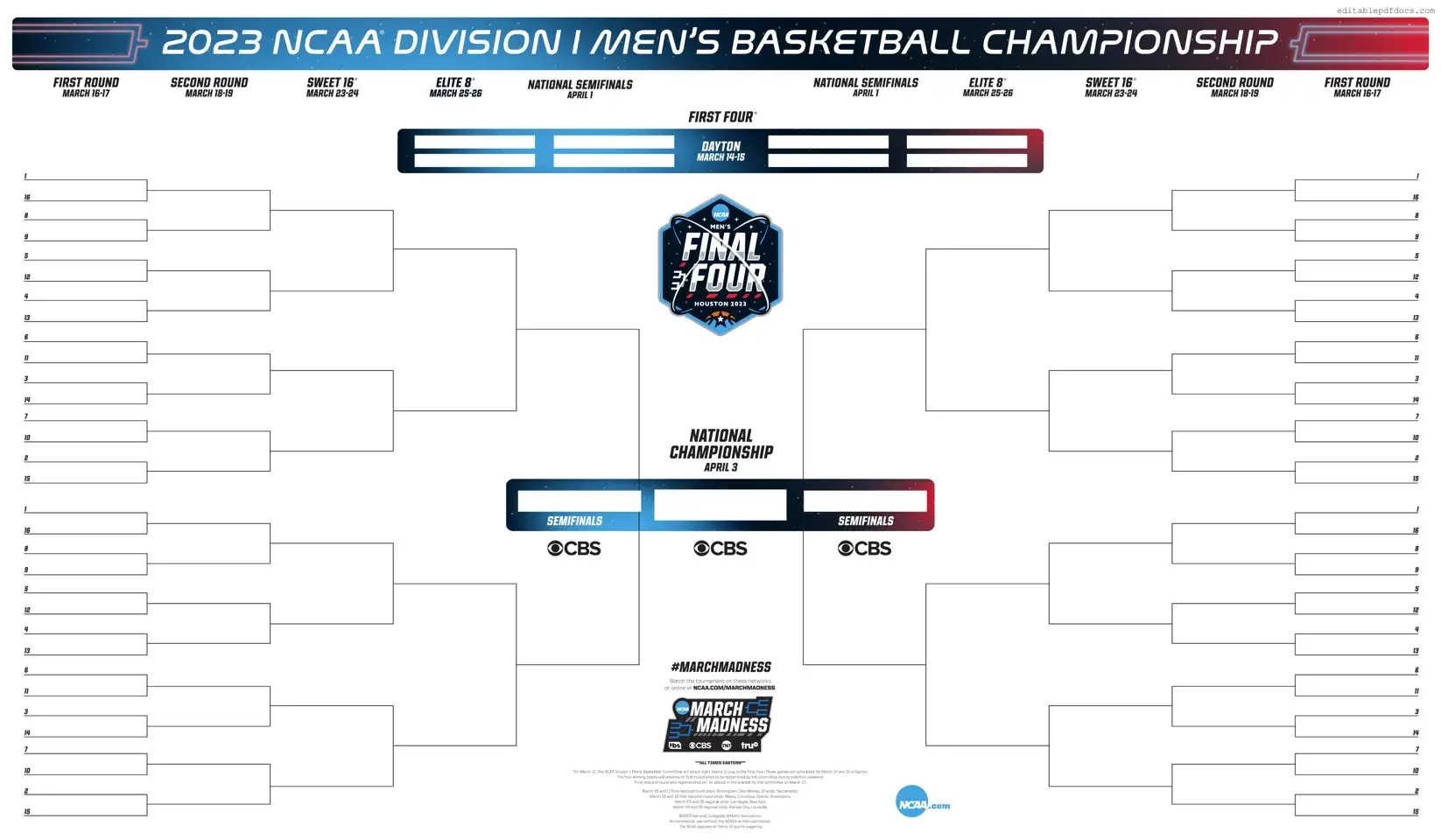Fill a Valid NCAA bracket Template
The NCAA bracket form is a structured template used for organizing and predicting the outcomes of the NCAA basketball tournament. Fans and participants fill out this form to showcase their predictions for each game, culminating in a champion. Engaging with this form not only adds excitement to the tournament but also fosters a sense of community among sports enthusiasts.
Ready to join the fun? Fill out the NCAA bracket form by clicking the button below!
Open Editor Now
